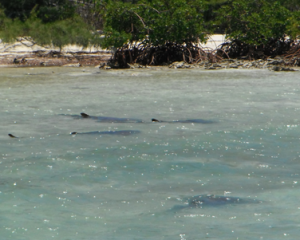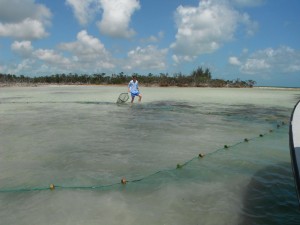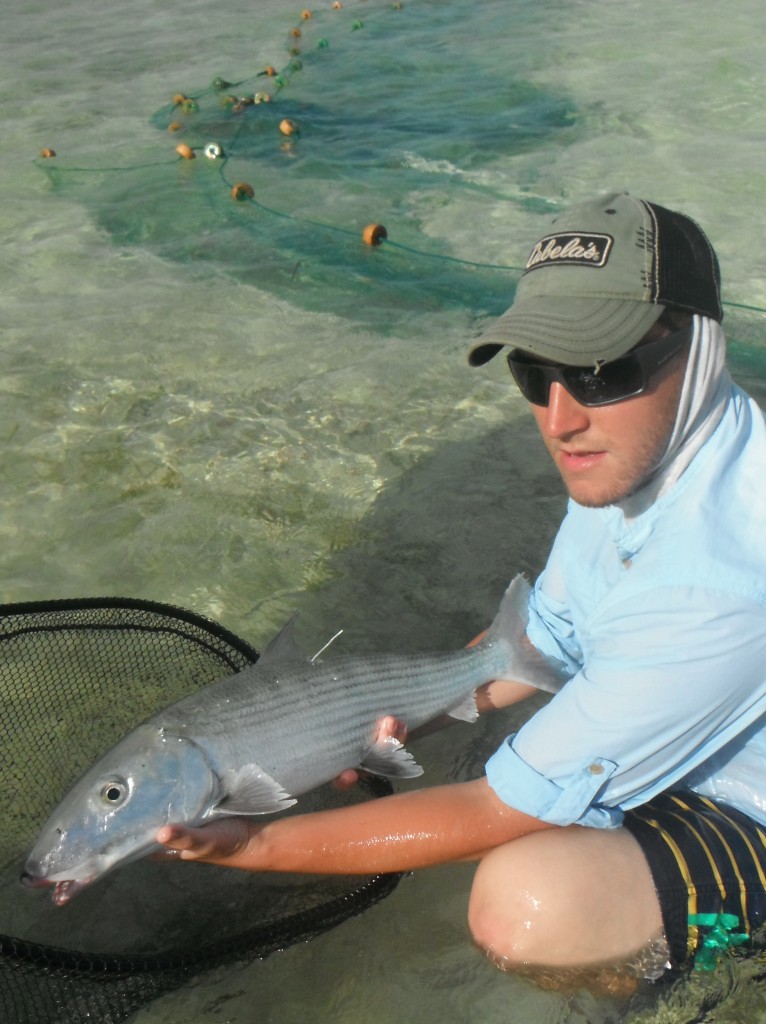
This June, The Flats Ecology Program (FECP) continued its bonefish tagging efforts as part of The Bahamas Initiative, an ongoing project between CEI, the Fisheries Conservation Foundation, and the Bonefish and Tarpon Trust, to assess population size, movements, and growth of The Bahamas’ bonefish population. The latest tagging efforts on Grand Bahama Island, funded in part by The Moore Foundation, brought a close to the six week research expedition across The Bahamas by CEI and Stony Brook University researchers (see “Shark Expedition” updates below).

CEI researcher Zach Zuckerman and FECP collaborator Justin Lewis first targeted bonefish near Lucayan National Park along the southern shore of Grand Bahama. Due to high winds and pounding surf, the researchers trailered their boat to the southeastern tip of the Island, near Deep Water Cay, and almost immediately spotted schools of fish. To capture bonefish, the researchers quickly and stealthily unravel a 150 ft. net a distance in front of the school, then rush to encircle the fish. The fish are allowed a few minutes to settle down before individuals are hand netted from the school, length measurements recorded, sex determined based on the presence of milt (sperm) or eggs, and an external tag embedded in the dorsal muscle of the fish. The tag has both a unique number and contact information printed on it so that fishermen and guides can report when and where fish are recaptured, thus providing The Bahamas Initiative tagging program with invaluable data on growth and movement.

A total of 102 fish were captured, three of which had been previously tagged. Included in the 99 newly tagged individuals was a whopping 67.2 cm (26.5 in) fish estimated at 11 pounds – the second largest bonefish tagged to date in The Bahamas! In addition to bonefish, several juvenile and adult lemon sharks and bonnethead sharks were also tagged along the northern shore of the island with the assistance of guides from H2O Bonefishing, Freeport.
As The Bahamas’ Initiative bonefish tagging program continues, more data will be collected to describe population metrics of The Bahamas’ economically important bonefishery. Such data can be used to assess habitats and areas of ecological importance to the bonefish – such as breeding grounds – as well as to provide information on movements to better protect the species. Protection of bonefish and associated species (e.g., sharks, turtles, snapper, and other creatures that inhabit the flats/mangroves) is integral to maintaining healthy nearshore habitat and fisheries. Collaborative research, such as described here, is a key component to resource management across The Bahamas.